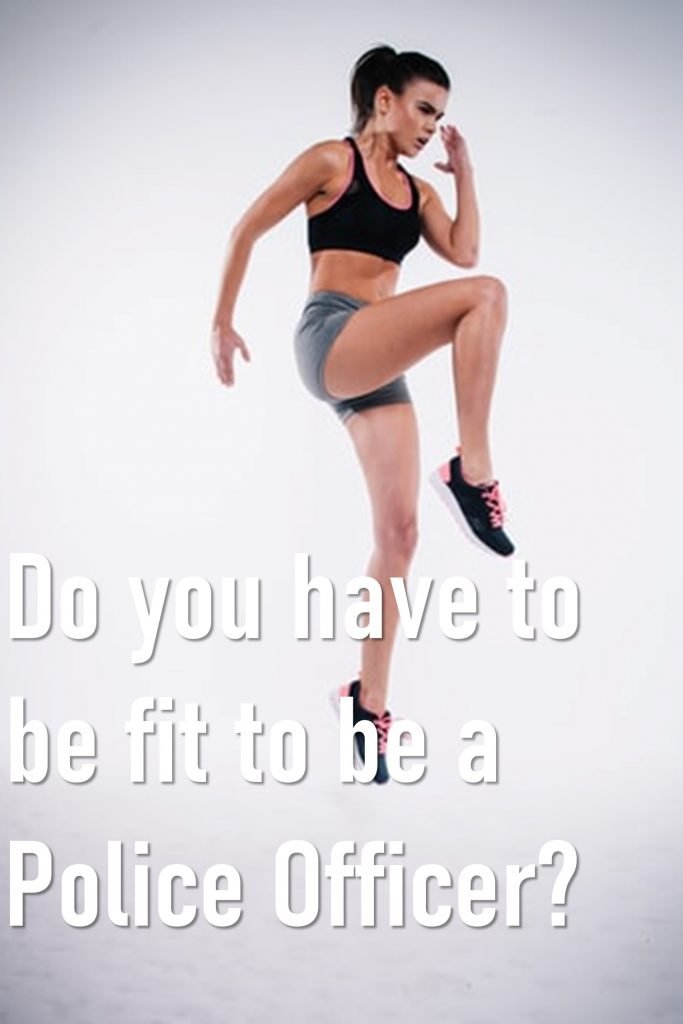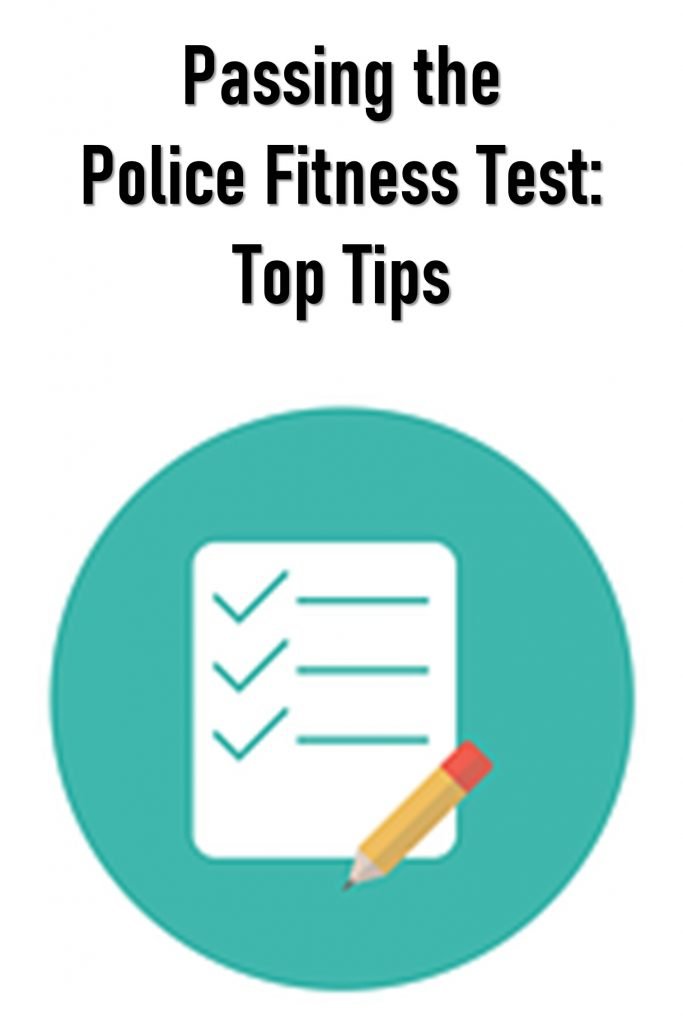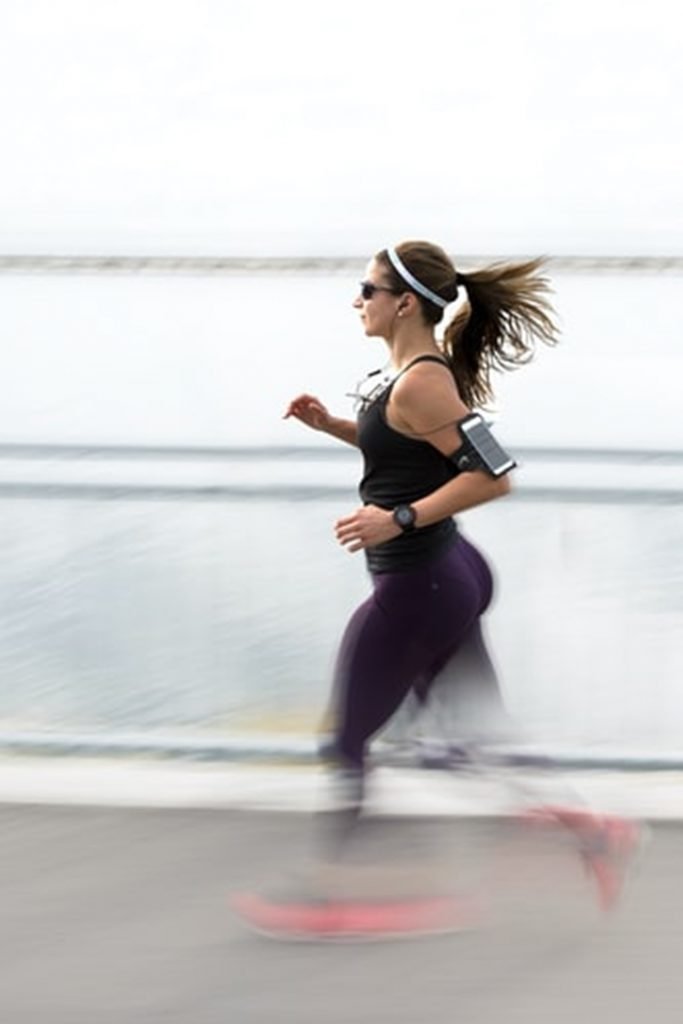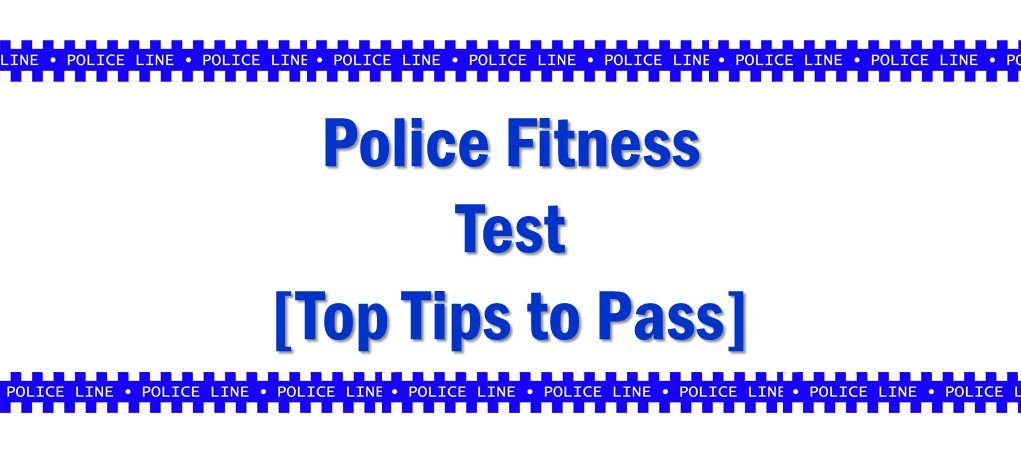When you’re applying to become a police officer, detention officer or another operational role, your fitness level is a vital component of the overall picture. Not only is it important that you’re physically fit to the level expected of a police officer, but it’s equally important that you’re willing to work hard and stay fit. This article with take you through what the police fitness test involves in the UK and will give you some top tips on how to prepare for and, more importantly, how to pass the police fitness test.
- How fit do you have to be to join the police?
- What does the Police Fitness Test Involve in the UK?: Fitness Requirement for Police Officers
- The Police Bleep Test
- What dos the police bleep test, test?
- What Happens if you Fail the Police Fitness Test
- What Level do I need to Pass on the Police Bleep Test for Specialist Roles?
- Alternative fitness tests
- Final Thoughts
The police fitness test is known as the Job-Related Fitness Test (JRFT)
How fit do you have to be to join the police?

I always get asked the question, ’How fit do I need to be to join the police?’. The police fitness test is a common concern for people looking at joining the police.
Police officers, PCSOs, Detention Officers find themselves in all sorts of different situations from diffusing physical conflict to chasing offenders and breaking down doors.
In order to do this, you will need strength and stamina to deal effectively with the situations you may find yourself in, especially when you need to defend yourself, colleagues, or members of the public.
Furthermore, working shifts can be draining on the body, you will need stamina and strength for this as well as handing the equipment you will have to carry. Due to all of these reasons a level of fitness is required.
Your level of fitness is measured through the job-related fitness test aka police fitness test.
What does the Police Fitness Test Involve in the UK?: Fitness Requirement for Police Officers
There are two elements to the police fitness test in the UK. You must pass both before you can be appointed into the role of a police officer.
- Dynamic Fitness Test
- Bleep Test
The requirements of both of these tests are standard across all of the Forces in England, meaning that you will need to achieve the same levels of the dynamic fitness test and bleep test, regardless of where you take the test. We will explore both of these police force fitness requirements and what they involve below.
.
The Dynamic Fitness Test
The dynamic strength test is more commonly referred to as the ‘push pull test’, you’ll soon understand why.
How is the Police Strength Test Assessed?
The dynamic strength test is assessed on a machine called a Dyno. The Dyno machine is like a rowing machine
How much do I have to push / pull for the police fitness test?
For the dynamic strength, you will have to push 34 kg, pull 35 kg
The Push Test – 34kg
For the ‘push’ element of the test, you will sit on the Dyno machine with your back straight against the seat. Whilst seated your knees will need to be at a 90-degree angle. You will need to take a firm grip of the bar with your hands level with the middle of your sternum.
The assessor will guide you through this.
From here you will push a bar away from you. The machine is a set resistance so no matter how hard you push, the speed at which you are able to push the bar will remain constant.
You will get the opportunity to complete 3 practices on the machine before your official assessment will begin. You will repeat this 5 times. The average force of the sum of the five pushes will be calculated, this needs to be a minimum of 34kg for you to pass.
The Pull Test – 35kg
For the ‘pull’ test you will sit facing the seat with your chest leaning against the backrest and then pull a bar towards you. Like with the ‘push’ test the resistance will remain the same no matter how hard you pull.
This time you will sit at the opposite end of the machine to the push test, with your chest pushed against the seat padding. Your feet must be flat on the floor with your knees at a 90-degree angle. You will need to take a firm grip on both of the pull handles with your hands level with the middle of your sternum. As with the push element of the test, the assessor will make sure you’re sat in the right position to give you an optimal chance of success and in order to minimise any injuries.
During the strength element of the police fitness test, you will be given the opportunity to do three practice pushes and three practice pulls. This is to give you the opportunity to get used to using the equipment, even if you are a regular gym goer, it is unlikely that you will have used a Dyno machine previously.
For your assessment, you will repeat this 5 times. The average force of the sum of the five pulls will be calculated, this needs to be a minimum of 35kg for you to pass.
Top Tips on How to pass the Police Strength Test
Check out our top tips as to how to pass the police strength test. With a little bit of training, this should be possible.

Training
The best way to improve your upper body strength for the police fitness test is to perform resistance exercises. These can be done using body weight, free weights or resistance machines. If you are a member of a gym that offers classes and weights, circuit or Les Mills Body Pump class will assist.
On the Day
Don’t rush yourself. There is no time limit on you completing the test. Ensure that you are comfortable and that you fully understand what is expected of you.
If you think you will be nervous on the day, find ways of calming yourself down. This may be through deep breathing.
The Police Bleep Test
Next, we will go through what to expect for the police bleep test; we will take you through what to expect and how to train for the police test. Before we go any further, why not watch this video from West Midlands Police, so you know what to expect.
Once you are appointed into the role you will need to maintain your fitness and you will be regularly assessed during your training phase (normally twice) and then at the end of your two-year probation period. After this time your ability to pass the bleep test will be assessed on an annual basis.
What dos the police bleep test, test?
The bleep test, also known as the bleep test, multi-stage fitness test (MSFT), or shuttle run test, is used in order to estimate an athlete’s maximal oxygen uptake, otherwise known as a VO2 Max. VO₂ max is the maximum (max) rate of oxygen your body is able to use during exercise.
How is the Police Bleep Test Assessed?
How far do I have to run to pass the police bleep test?
The bleep test involves running back and forth along a 15 meter track in time to a series of beeps. The beeps get progressively faster as the levels increase. This means that the speed at which you are running has to incrementally increase. You are required to reach the other side of the track before the next bleep.
What beep test score do you need for the police
Police Officer have to reach level 5.4 on the bleep test, while for some kinds of specialist officers the standards are higher; these levels are outlined below.
How many shuttles are there in the police bleep test?
In order to achieve level 5.4 on the bleep test, you will have to complete 35 shuttle runs. The runs are 15 meters each. This means you are running a total of 525 meters, just over half a mile.
Police bleep test: How many minutes of running
In order to complete the 35 shuttles to achieve level 5.4, you will need to run for a total of 3 minutes and 35 seconds.
The breakdown of how far, how fast and for how long you need to run is outlined in the table below.
| Police 15m Bleep Test | |||
|---|---|---|---|
| Required Level: 5.4 | |||
| Total Running Time | Total Running Distance | Total Shuttles | Fastest Speed |
| 3 mins 35 sec | 524 Meters | 35 | 10.1kph |
| Levels | Shuttles Per level | Sec per Shuttle | Speed Per Shuttle |
| 1 | 7 | 6.9 | 7.8 |
| 2 | 8 | 6.4 | 8.5 |
| 3 | 8 | 6.1 | 8.7 |
| 4 | 8 | 5.6 | 9.3 |
| 5 | 4 | 5.4 | 10.1 |
How fast do I have to run to pass the police bleep test?
The bleep test takes 3 minutes and 35 seconds and is made up of 35, 15 metre shuttles between two points. Your running speed will start at 7.9kph and will increase to 9.9kph. In reality, 7.9 kph is a very fast walk / slow jog and 9.9 kph should be a jog where your breathing is starting to deepen.
Top Tips on How to pass the Police Bleep Test

The bleep test can be challenging – after all, police officers need to be fit to do their job well. However, with the right preparation, you’ll be giving yourself the best chance to pass.
If you have a disability or medical condition that you believe will make it difficult to complete the standard fitness test, please contact the Occupational Health department prior to taking the test.
Some forces may allow you to complete the ‘alternative fitness test’. This test takes place on a treadmill. We will discuss this further below.
Not all police forces will offer this to new joiners. However, if you are a serving police officer with a medical condition that means you may not be able to complete, the bleep test, this may be an option for you.
How to prepare for the police fitness test
‘How do I prepare for the police bleep test?’ is one of the most common questions we get asked in relation to the whole assessment process.
Here we will take you through the out top tips for training in order to pass the police bleep test and tips for the big day!
Training for the Bleep Test
I will put the usual disclaimer in here that before completing any new physical activities you should seek guidance from your GP. Now, let’s get into it!
Once you are in the recruitment process you may be requested to attend your police fitness test with very likely notice, as such you need to be preparing for your fitness test well in advance of the day. We recommend that you start training 12 weeks in advance, especially if you a new to exercise.
During your training, a good tip is to monitor your progress by recording your metrics, such as times taken, distances covered, and your recovery times. This will give you feedback on improvements, once you see that your physical fitness is improving, this will provide you with an incentive to continue with your training.

If you have not trained before, do not set your expectations too high and overtrain. You will be likely to cause yourself an injury. You are better starting off slow and then gradually build up over a period of weeks or months.
Before starting any physical training you will need to make sure that you warm up; this will decrease the risk of injury. Your warm up exercises should be slow and not put unnecessary strain on cold muscles. This could include a slow jog
For the bleep test, the best preparation is running on a regular basis, aiming to achieve a 30 minute run on a daily basis for at least 5 days a week.
If you do this over a minimum of a 12 week period, you will be putting yourself in the best position in order to pass the police bleep test.
Other cardio activities such as cycling, rowing, and swimming will also be useful in your training. If you are exerting yourself to the point where you are breathing deeply for oxygen; you will be increasing your VO2 max, which is ultimately what the test is assessing. However, you will need to incorporate running into this, in order to get your leg muscles used to what to expect.
Interval training within your running will also be beneficial as this can assist in increasing your VO2 max. If you incorporate practicing turning into your running regime, this will be beneficial as it will start to mimic the bleep test.
Cooling down after exercise will help you to recover and prevent muscle soreness. Your cooldown should consist of a light exercise that gradually decreases in intensity, combined with some gentle stretches, particularly for the muscles that have just been worked.
Most forces will allow you to do a ‘practice test’ before your actual assessment. If you are nervous about completing the test, ask if it is possible to do a practice run. Hopefully, this will be at the same facility that you are going to complete your bleep test at, so you will become familiar with your surroundings.
How to replicate the police bleep test on a treadmill
The beep test can be replicated on a treadmill, at home or in the gym but this will not be as representative of actually practicing the test itself. The downside to this is that you are not replicating the turns that you will have to do in the regular bleep test.
However, a treadmill can be used for training. Most treadmills will have an interval program on them, these are great for practicing and increasing your VO2 max.
Police bleep test app

A good way to practice is t set out a 15 meter course and practice the bleep test using an app.
For reference, the width of a standard UK basketball course is 15 meters, so if you have one of these in your local park, this may be an option for you.
There are a number of police bleep test apps out there, however, some are for different countries, and vary as to whether they are over a 15 meter or 20 meter course.
We recommend this one.
If you are completely new to exercise and/or running, why not download the NHS Couch to 5 K app to help you on your way to becoming a runner.
On the Day
Before the assessment, you will get a full briefing from the assessor
On the day you may be asked to complete the bleep test to level 3 as a warm up. You will be given time to recover before you are asked to complete the assessed portion of the test.
✅ Ensure that you are appropriately dressed for the test, gym clothing with good running trainers will be ideal.
✅ Make sure that you are well hydrated for the test, studies have shown that being properly hydrated can improve performance.
✅ Ensure that you are well rested before your assessment, consider having a rest day from training the day before and ensure that you have a good nights sleep beforehand
✅ Leave yourself plenty of time before your assessment. Centre. You do not want to be running late as this may increase your anxiety levels, which could impact your performance.
What Happens if you Fail the Police Fitness Test
If you fail, do not panic. You will know on the day whether you have passed or failed the police fitness test. You will know what element you have filed on, be it the dynamic strength test or the bleep test. This will give you an indication of what you need to work on.
MOST forces will allow you to take the fitness test again. This is normally within 6 weeks of you failing the assessment. If you have already been training, this should be enough time for you to improve your performance. If you fail your second attempt, you will likely get a third attempt.
If you fail your third attempt, your application will be rejected and you will have to start the application process over again. Most forces have a policy that you cannot submit a further application to a force for a period of 6 months.
What Level do I need to Pass on the Police Bleep Test for Specialist Roles?
If you are in a specialist role then you will need to complete the bleep test to a higher level. The list below details what these roles are and what level you will be expected to meet.
| Bleep Test Levels for Different Roles | |
|---|---|
| Role | Level |
| Regular Police Officer | 5.4 |
| PCSO | 5.4 |
| Detention Officer | 5.4 |
| Detective Constable | 5.4 |
| Special Constable | 5.4 |
| CBRN | 5.4 |
| Method of Entry | 5.4 |
| Dog Handler | 5.7 |
| PSU Level 2 | 6.3 |
| Firearms Support Unit | 9.4 |
| Armed Response Vehicle | 9.4 |
| Specialist Firearms Officer | 10.5 |
Alternative fitness tests
The Chester treadmill police walking and run test (CTPWT and CTPRT)
The alternative fitness test is not normally offered to new joiners, but existing police officers.
An alternative test was introduced in 2016 – the Chester treadmill police walking and run test. Both the CPTWT and CTPRT are treadmill tests designed for officers with injuries, which prevent them from completing the bleep test.
The alternative fitness test takes place on a treadmill. After a suitable warm-up, the subject is required to walk at a brisk pace (6km/hr). Following this initial warm-up, the gradient is raised by 3% every two minutes for a specific amount of time. The length of time an individual must continue depends on your role and the fitness requirements of that role.
Standards needed for the treadmill tests
| Role | Time (minutes and seconds) |
| Police officer | 10 |
| Chemical, biological, radiological, and nuclear police (CBRN) | 10 |
| Dog handler | 10 and 20 secs |
| Mounted branch | 10 and 20 secs |
| Police cyclist | 10 and 20 secs |
| Police support unit | 10 and 40 secs |
| Air support unit | 10 and 40 secs |
| Police drivers | 11 and 20 secs |
| Marine police | 11 and 40 secs |
| Authorised firearms officer | 12 |
The CTPRT treadmill protocol is the same test but conducted at a greater speed (10.4km/hr) to reflect the higher aerobic demand.
| Level | Time (mins) | Treadmill gradient |
| 1 | 0 to 2 | 0% |
| 2 | 2 to 4 | 2% |
| 3 | 4 to 6 | 4% |
| 4 | 6 to 8 | 5% |
| 5 | 8 to 10 | 8% |
Final Thoughts
In this article, we have covered what the Police Fitness test involves and how to prepare for the dynamic strength test and the bleep test.
This may seem like an unnecessary test to pass, as you don’t chase criminals zig-zagging in 15-meter shuttles! However, this fitness test is checking so much more than that. It is checking your strength and stamina in order to manage the grueling challenges of being a police officer.
In summary, the fitness test is not unmanageable, even if you have no level of fitness. With a bit of practice, following our guidance, you should be able to pass.
Why not check out one of our recent articles;
- Can I Join The Uk Police With Polycystic Ovaries?
- What Equipment Do The Police Carry? [Belts & Vests]
- Joining The Police With An Assault Charge [Is It Even Possible?]
- How To Survive Your First Shift As a Student PC
- How Long Does It Take To Become a Police Officer? [UK]
Or, check out our FAQs section, if you don’t find what you are looking for, contact us and we will see what we can do to help.




